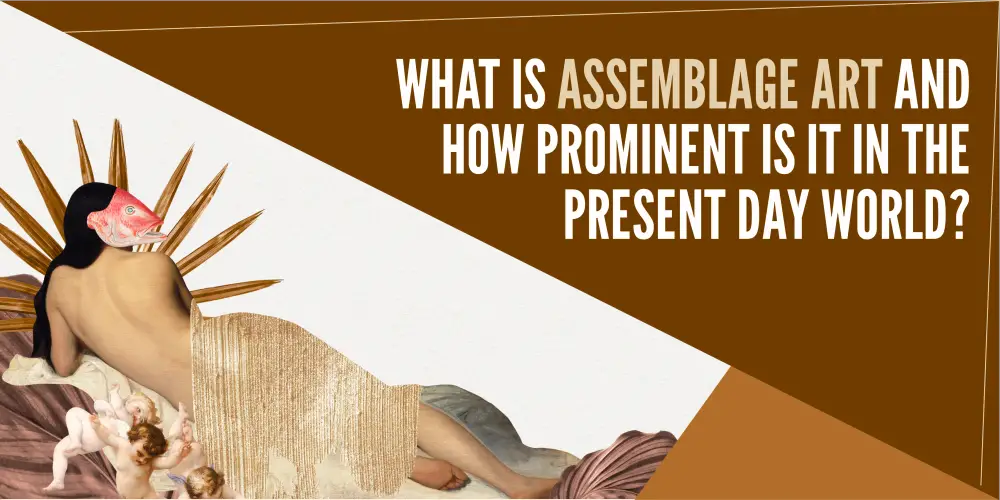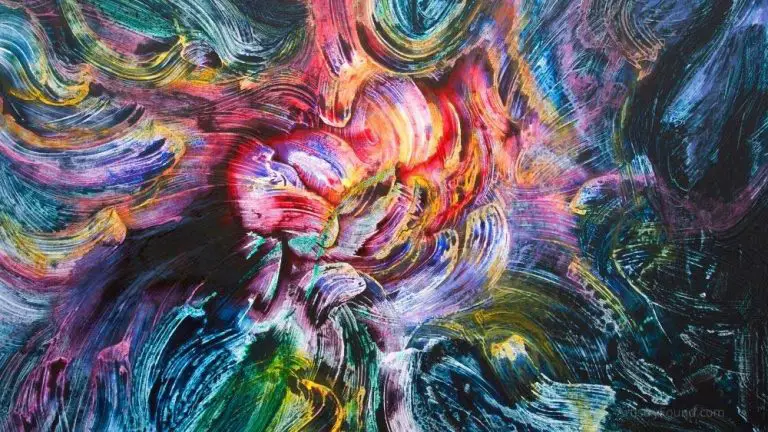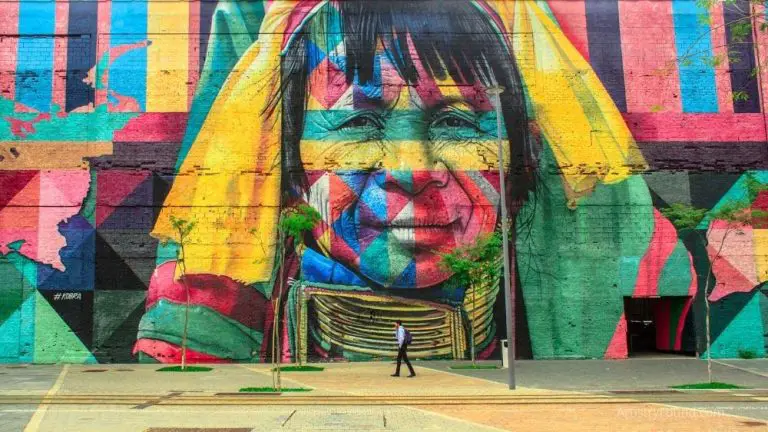What Is Assemblage Art? (Explained)

(This article may contain affiliate links and I may earn a commission if you make a purchase)
The term assemblage means “collection of things.” It refers to an art practice created by using everyday objects in an artistic sense. The art materials can be either natural or man-made and are assembled in such a way as to create a new meaningful piece of art.
Assemblage art often revamps damaged or worthless objects to create unique designs with existing elements. Many assemblage artists aim to question traditional designs by including antiquities and non-art materials in their work.
These assemblage techniques were popularized in the art community in the 1950s by German artist Jean Dubuffet. However, there are many examples of this method used throughout art history.
Assemblage artworks were created by Pablo Picasso and other Cubists, whose construction method goes far beyond the appearance of an image or the shape of a form because cubism’s whole theory is based on disintegration.
Still, the introduction of the ‘ready-made’ art, which allowed common objects to join in the production of art projects, is thanks to Marcel Duchamp, the founder of modern art.
An Overview of Assemblage Art

Flickr by Ed Schipul
Assemblage art brings ordinary things together in unexpected ways, forcing the viewer to reconsider their relationship to the reality of discarded objects around them. Assemblage artworks give new meaning to these items, creates innovative linkages between incongruous pieces, and introduces non-art objects into the art world.
This type of art form creates inspiring art objects with the help of scrap materials such as paper, wood, metal, or any other waste products. It is sometimes employed as societal commentary or exploring the mystical and dreamlike realms.
Assemblage art opposes what modernist critics believed to be the growth of contemporary art by merging prepared or discovered pieces with variable degrees of alteration.
Assemblage art blurs the lines between drawing, sculpting, and performance art by engaging several senses and frequently requiring more physical contact from the observer.
Most assemblage art tries to question conceptions of uniqueness and authenticity that have been so vital to conventional artistic ideas by using manufactured goods and non-art elements. The assemblage artist undermines the traditional concept of the artist as a maker by picking the disparate elements rather than handcrafting them.
Furthermore, it is frequently associated with folk art practices. The definition of “artist” has evolved significantly over the years, embracing unskilled and self-taught artists beyond the norm.
Assemblage Art and Sculptures
Assemblage art and sculpting are linked. Collecting scrappy materials is at the heart of this curious art form, while sculpture involves constructing a structured shape. When creating a new sculpture, artists accomplish two things: they start by gathering the necessary material and supplies and then transform them into new shapes.
“Building” is the process of creating new shapes and forms from these materials. The sculpture is no longer bound by what its parts were prior to this. Assemblage is a relatively new genre with little time to mature. Yet, it is a fairly ambiguous categorization in and of itself. Nonetheless, both of these art mediums are three-dimensional.
Brief History of Assemblage Art
Assemblage is considered a style in the realm of art where artists build three-dimensional creations out of found objects, or any other material that can be used for artistic purposes, to create a unique art piece.
It is theorized to have been introduced to the art world by Pablo Picasso. He was well-known for his Cubist buildings and other works of art. However, it wasn’t until the 1950s that the term was coined.
Titled assemblages d’Empreintes is a genre of composite art by the artist Jean Dubuffet that features butterfly wings. It became popular, and other artists used it to express their creative process. Even though the phrase is connected with the mid-twentieth era, many geniuses, including Picasso, preferred this method of making art.
Marcel Duchamp, Vladimir Tatlin, and Louise Nevelson were all artists that used this method of putting any conceivable materials to artistic use.
As inspired by visions, many other artists saw the possibility for assemblage methods to achieve unsettling, dream-like themes. Hans Bellmer’s unnerving dolls and Marcel Duchamp’s infamous Readymade artworks transcend commonplace things into works of art with minimal input.
Joseph Cornell, an American artist, expanded on these concepts in his reduced assemblages, producing magical sceneries nested inside depth boxes.
The Anti-Art Artists
The ‘anti-art’ artists embraced this art form further, transforming common objects into artistic shapes and everyday art. Kurt Schwitters was a creator of assemblage art, combining foraged things such as old bus tickets, bits of paper, and wood leftovers to create two intricately layered artworks. His Merzbau sculptures were his most significant pieces, which grew to be room-sized sculptural structures.
Raul Housemann created a wonderful Sculpture in 1920 by attaching elements such as a watch movement, yardstick, tin cup, and measuring tape to a timber head. From Tokyo Kumagai’s consumable footwear to Lady Gaga’s Meat Gown, Elsa Schiaparelli’s innovative creations have sparked unending replication.
Assemblage Art By Robert Rauschenberg
Robert Rauschenberg was born in 1925 in the United States. Despite being identified with the Pop Art movement, his work has evolved and advanced from pop art to this art form. He worked in various mediums, but what was most especially interesting were the assemblages he made from the 1950s through the 1980s, which he termed “combines.”
Rauschenberg merged discarded things with painted surfaces, such as vehicle tires and number plates, plush animals, doorways, bed linens, electrical light fixtures, and other urban waste.
Social Statements & Betye Saar
Betye Saar’s unusual assemblages that reference African traditional spirituality, heritage, emotion, and melancholy battle prejudice, prejudice, and preconceptions by combining folk art style with symbolic, surreal images.
Her early works were mostly constructed of found things organized in boxes and windows, reflecting her mixed origins while also making a broad message. Her latter works include huge, site-specific constructions, as well as altar-line temples that integrate technology, theology, mysticality, and rituals.
Used in DC Comics
Assemblage art is growing more popular as a medium, spilling over from the realm of “fine art” to be employed by current designers and graphic designers. The most well-known example of this movement is undoubtedly English artist Dave McKean.
His work on the illustrations of DC Comics’ “Sandman” series – all collages of materials with strong echoes of Cornell’s boxes – is arguably his most well-known. He uses 2D imagery, sometimes including computer-manipulated pictures in his compositions.
The Modern-Day Assemblage Techniques
It’s important to acquire a few expert assembly suggestions from established artists of the present world if you want to create something genuinely larger than the sum of its parts. This way you can learn some amazing techniques that will help you understand different aspects of assemblage artistic sense.
It might be intimidating to start with this type of art, especially if you’re encircled by a lot of different parts that don’t appear to go together.
Lynn Krawczyk offers some advice on how she goes about making an assemblage.
Her suggestions include selecting a huge focal feature that defines the piece’s concept, 2–3 smaller components that relate to the subject, and then filling in the gaps with complementary details. You can also fill gaps by adding colors and changing elements to match your theme.
Jen Hardwick sorts fresh materials for her assembly cache before adding them to her collection: equipment, game pieces, hooks, miniatures, etc. Jen claims that having things orderly is crucial to her creative process. Sorting the objects before assembling, examining what’s accessible and how the various materials work together is crucial for achieving the harmony needed to assemble in the first place.
American artists have an uncanny ability to see the exceptional in the ordinary. Seth Apter spotted a dimensional item suited for assembling in a paper die cut. He turned a basic 2-D sheet of cardboard into a 3-D focus piece by stacking and gluing 12 die-cuts with the same pattern and adding vivid color to the stack using paint.
Try it out on your next assemblage venture; you can even cut the pieces manually for a unique appearance.
Making this type of artwork is similar to telling a tale using discovered things, inviting the audience to discover their significance. Mixed-media artists are known for having a large collection of discovered things.
Finding a variety of items that match your subject, setting them down on your worktable, and spending time placing them on the canvas until you obtain the effect you want is recommended. It’s more akin to casting than prior planning.
You’ll be able to tell when the parts fit together properly and when they don’t.

Flickr by Alaska Region U.S. Fish & Wildlife Service
Look no further than your local lumberyard for a robust, low-cost basis for your next assembly. Scrap pine timber makes a great assembling base. It’s plentiful, affordable, and soft, making it ideal for piercing and hammering and providing plenty of space to display art methods.
You may make light bulb awards (Amazon) from wood blocks, light bulbs, and pine cones. You can create assemblage by holding items up for painting, printing and stenciling, collage, fading, and other techniques, which results in colorful, rustic-looking work.
Why is Assemblage So Popular & Important?
At a glance, the assemblage art form appears to be a three-dimensional version of composite, which is a process for creating a piece of artwork by pasting numerous discarded objects not generally linked with one another onto a surface.
Anyone can make assemblages by using various found objects. This art does not have hard and fast rules, and this creative freedom makes it one of the main reasons for being popular in the present world and years prior.
What’s more, any found object can be used. These objects may vary from expensive items to stuff found in a garbage dump. It is all about how one combines them together in an artistic way, which can be seen from the earliest examples to the modern assemblages of today.
Global social issues is another reason why this type of art holds great importance in the industry. It can be a tool used to change the non-biodegradable trash of humans into different art objects, and these assemblages are exhibited at national galleries. Indirectly, assemblages may reduce the pollution on Earth.
Many art schools and colleges are making an effort to provide knowledge about this art by offering workshops. These workshops help students learn how they can turn scrap into a beautiful piece of art.
What Is Assemblage Art – Final Thoughts
This interesting and innovative art form of assemblage is considered an innovative method in the realm of art. The assemblage technique provides artists with a new way to create surprising designs.
It has allowed some American artists to create their concept of anti-art, while others considered it beneficial for making social art.
Assemblage is still used today as a very adaptable creative medium. Many well-known assemblage pieces may be found in some of the world’s most prestigious modern art institutions.








